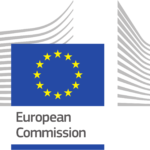Flexible, agile and lean low investment manufacturing
Partnership with COMAU and MA – CLN Group.
++185 R&D partners in EU projects
Microfactories history
The microfactory concept has been introduced in the electronics and microfabrication worlds and indeed successful in the fabrication of sensors, micro-actuators and small devices of various kind.
The idea of economically produce Electric Vehicles within microfactories has always been associated to the concept of “born electric” vehicles first introduced by Pietro Perlo in 2010 at the Idtechex EV conference held in San Jose
Public presentations and videos on the I-FEVS concepts can be found here and here
We appreciate and encourage other companies to adopt terminologies and concepts introduced by I-FEVS for the EV world, but some clarifications are needed to avoid speculations.
To produce safe EVs the largest investment needed is for the chassis, the reason why many EVs continue to be electrified versions of chassis initially conceived to install Internal Combustion Engines. Classical chassis require the design and fabrication of many expensive molds, 1000-5000 ton presses to stamp metal sheets and complex robotized assembly lines. To manufacture a completely new safe chassis is extremely expensive and may require the sale of hundred thousand vehicles before the full return of the investment. Tesla using Italian technologies has recently introduced the fabrication of the rear part of a chassis by casting a single block of aluminum. This reduces the number of fabrication steps but it also requires large investment affordable only to few organizations.
In the last 60 years only one new automotive manufacturer has emerged in the US market, passing from years and years of B$ losses, all other OEMs have ceased their activities, bankrupt or still in business because strongly supported by their government. The same in Europe, most OEMs have a direct or indirect participation of their government. Competing with large OEMs on classical manufacturing technologies is a technical and financial suicide.
Here comes the I-FEVS idea of producing chassis-body frames meeting all most stringent crash tests avoiding all kind of stamping and robotic assembly. The microfactory concept has to be associated to the production of safe chassis. Some countries have supported new manufacturers through lighthouse projects without asking how these companies could produce a safe chassis. That is only an indication of the incompetence of national authorities spending public money. There is no safe car on the market meeting crash tests using resin-based composites or resin-plastic doors only. The destiny of companies that do not make safe cars and do not present crash tests is to generate losses and losses or pass from one insolvency to another, to sustain their operations they continuously re-launch new financial rounds or try to become public companies in which the first large investors make a return while all others, the small ones, are losers.
Making cars using proprietary components-systems and properly addressing sustainability with recyclable materials is also a long and expensive process.
It took many years to I-FEVS to learn how to manufacture safe chassis/body frames meeting all most stringent crash tests and be totally independent from large TIER1s automotive suppliers. A long process covered by 140 granted patents defended in partnership with a world leader in patent litigation.
It has to be pointed out that to produce Buses or Commercial duty vehicles, there is no need of Gigafactories, there is no regulatory demand or need to demonstrate the results of crash tests. For those categories the competition is with well-established OEMs producing vehicles resulting from decades of cost-performance refinements and most often heavily supported by their governments.
For the companies, large or new entries, addressing the development of safe passenger vehicles it would cost much less time and money to find an agreement with I-FEVS. Our body frame is modular, can be made wider or longer easily, can be produced with a small investment. I-FEVS is open to share his achievements and allow everybody low-cost manufacture of safe, efficient and ergonomic vehicles free from IPRs constrains.
I-FEVS
Interactive Fully Electrical VehicleS S.r.l.
Strada Carignano, 50/1
La Loggia (To) – 10040 Italia
P.IVA 03395740040
